| We had driven along the
road from Four Corners towards Monument Valley and had seen many of the
pillars we had expected. The park itself is on Navajo land and you have to
pay a fee to enter, and to see more than the basic views you have to take a
bus tour with a Navajo guide. Though the unguided 'basic tour' road is unpaved
it can be travelled by car, but we guessed it was
unsuitable for an RV. | 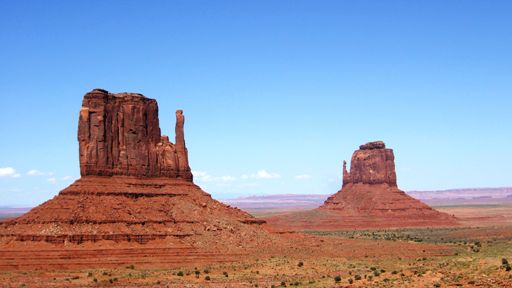 |
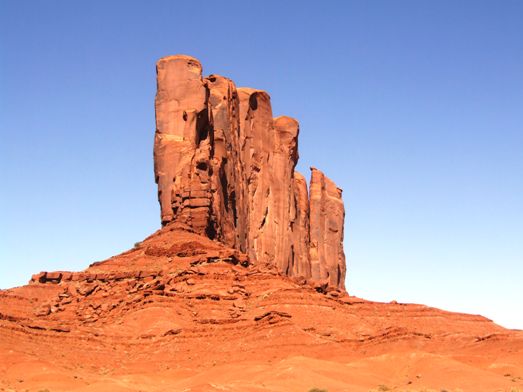 |
So we took a tour which also goes in other restricted areas. The road is most
definitely not for anything other than a 4 wheel drive off road vehicle.
The photo above is of the Two Mittens. Many of the features are named
although we cannot remember all of the names. |
| The cliffs are just
amazing rising out of the otherwise flat plain. The colours are generally
red but vary according to the angle of the sun and the direction it is
coming from. We took one of the 3 1/2 hour tours which leave directly from
the campground/lodge, though there are others of varying lengths or which
leave from the visitor centre. We had to choose between an early morning (0845hrs)
one which catches the morning sun and the one we took at 1545hrs which
catches the evening sun. | 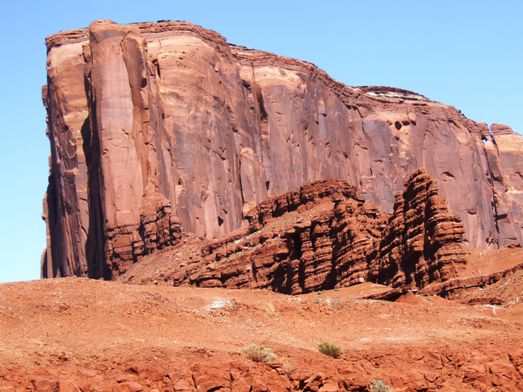 |
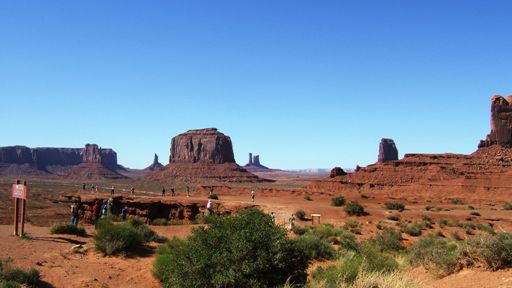 |
There are many stops including this one which is particularly photogenic.
This is John Ford Point, named after the famous director who first made westerns in
this location with a very young John Wayne. |
| They even have a cowboy to
pose and give the place some character. Or you can sit on the horse
yourself for a few dollars more. | 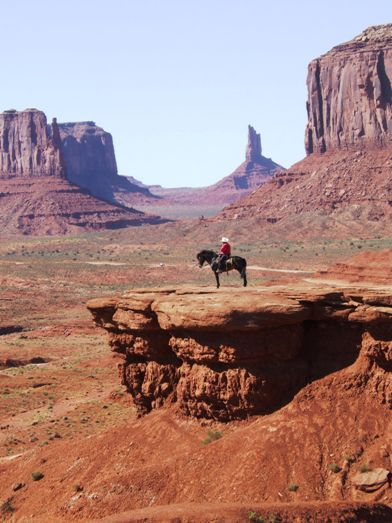 |
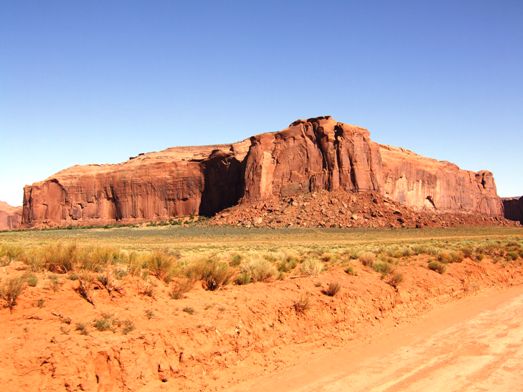 |
But we moved onward ever deeper into the valley. The Mittens are in
Utah but most of the rest of the valley is in Arizona although the land you
can see to the east is often New Mexico. |
| About 300 Navajo still
live in the valley in fairly primitive conditions without running water or mains
electricity. They keep sheep as they have done for several centuries. | 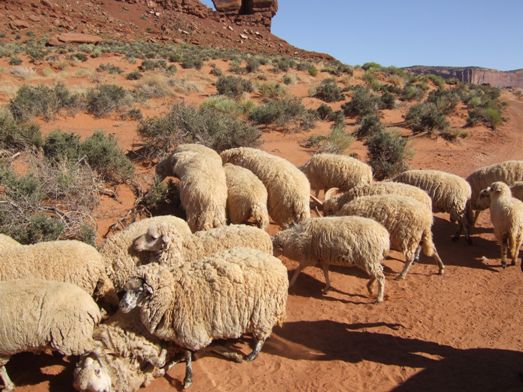 |
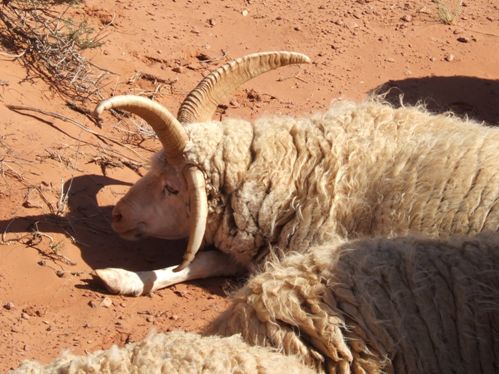 |
The sheep are Navajo-Churro and are well adapted to the desert conditions.
They are notable because the rams have four horns. It looked more like the
result of some inbreeding to me. However Churro is Spanish for common. The
Merino sheep were too valuable for export from Spain in 1598 so the
conquistadors brought
more mundane varieties to the New World. The Navajo have been sheepherders
and weavers since about 1650. However as a result of various government
actions the breed was down to about 500 animals in 1950. Today it is still
classed as a rare breed but there are now over 5000. |
| The restricted trails
are very sandy and our trail bus (based on a Dodge RAM 4 wheel drive) often
struggled on the soft parts of the trails. | 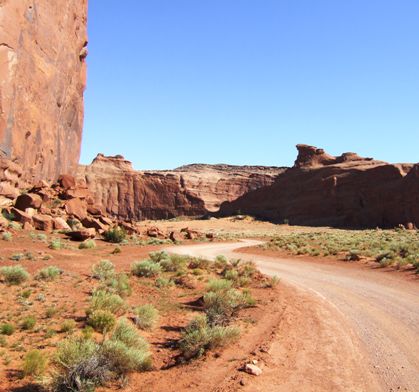 |
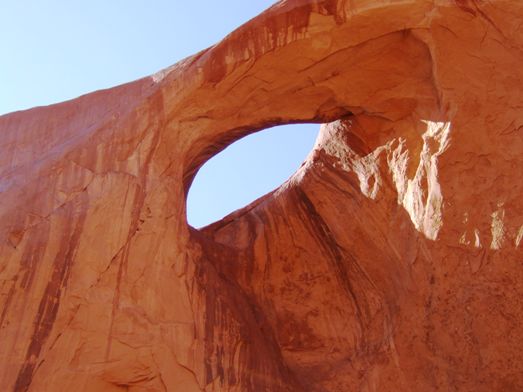 |
The guide areas took us to features where the soft sandstone has worn
away to create holes much as you can see at Arches National Park some 200-300 miles to the north
but part of the same formation. |
| At the foot of this
particular cliff (under the eye) there are a number of petroglyphs pecked
into the rock face showing people and animals which once roamed the valley.
Alas big horned sheep are no more. | 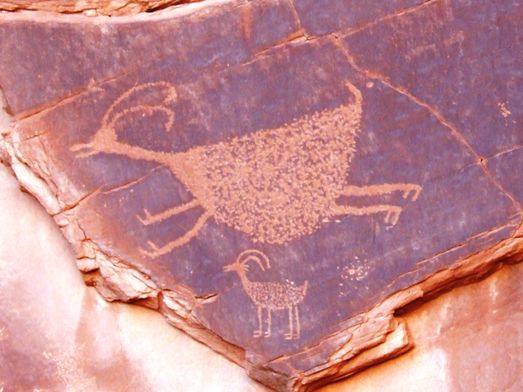 |
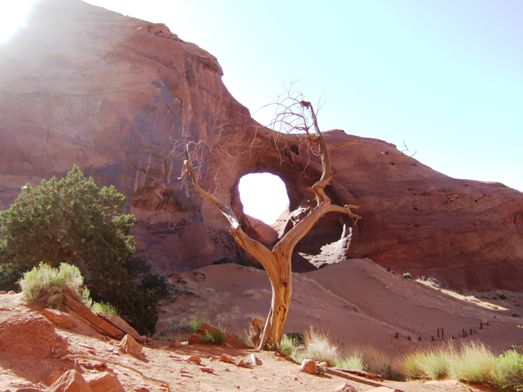 |
Our guide told us all to climb up this trail and stand on the X marked on
the rock to take this particular photo. I wonder how many shots of this
particular hole there actually are. |
| Next door is a shallow
cave known as the 'Hogan' because of its shape and the hole in the roof.
They must have had some pretty big Indians around here | 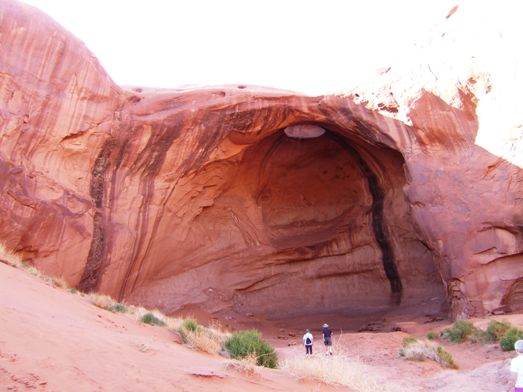 |
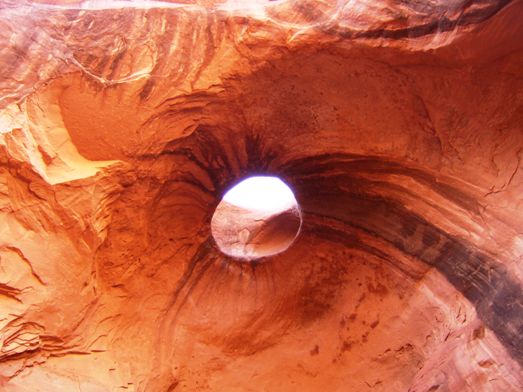 |
The hole in the ceiling made by the action of water over eons of time. Annual rainfall
here is in single figures of inches. |
| Coming out past the Totem
Pole with the Yebichei dancers off to the side, though they don't look much
like dancers from this angle. | 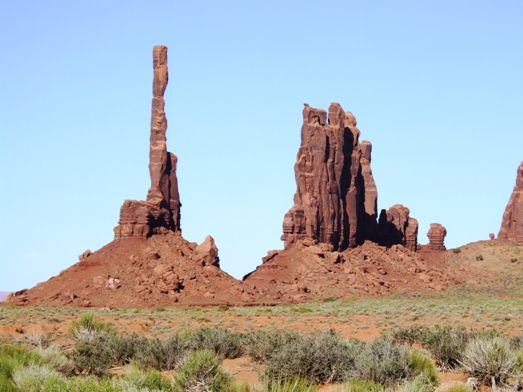 |
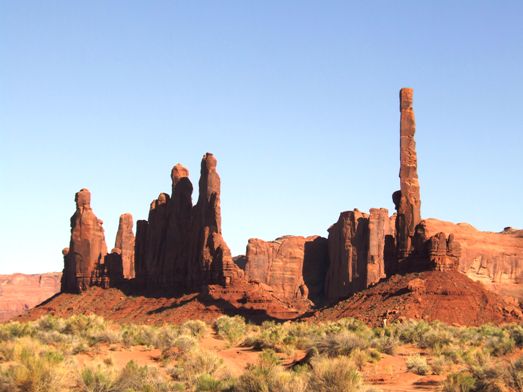 |
The sun is beginning to go down and the shadows and the angle for the dancers
still isn't quite right. |
| This feature is called
the submarine with the Flintstones (Fred and Barney) on the conning tower. The
Navajo obviously have
a sense of humour and vivid imaginations. | 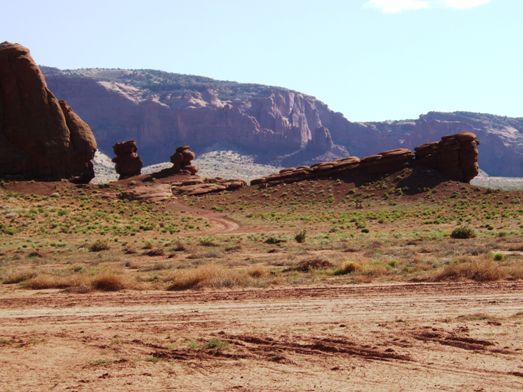 |
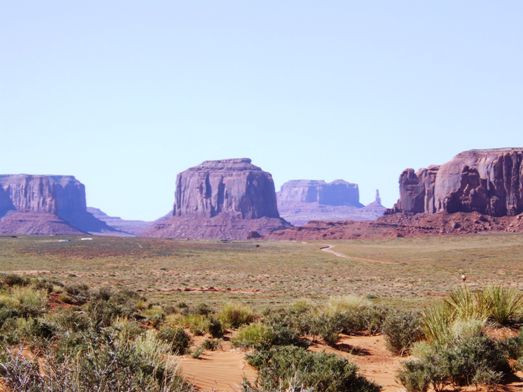 |
The air is probably clearer in the mornings. After a day of sun we are
experiencing quite a lot of haze. |
| There is water in the
valley from a seep spring. In contrast are the ripples in the sand making
sure you know this is really a desert with dunes, and the sand is moving, as
the lumps are scrub bushes being slowly buried. | 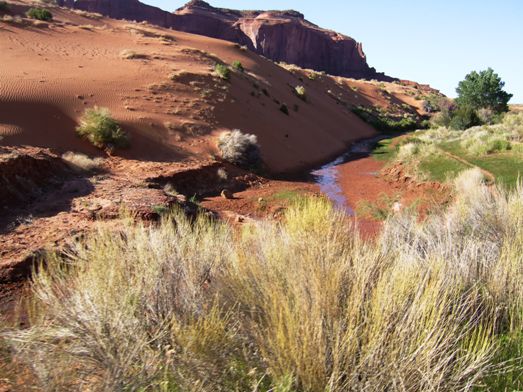 |
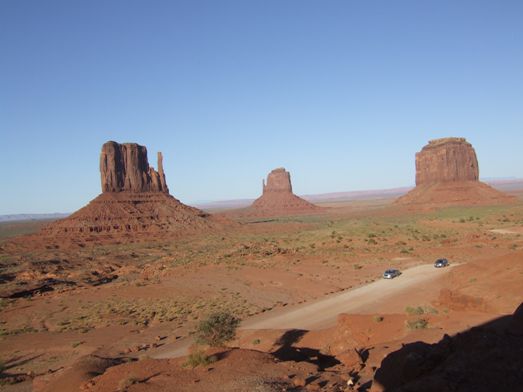 |
We climbed out of the valley past the new visitor centre and a three storey
hotel being built by the Navajo. They are beginning to realise that they can
make money from this world famous tourist destination. |
| We thought we had better
have a photo to prove that we had been there. My hat is Australian and Jan
had one with her too. You can get seriously sunburned here. | 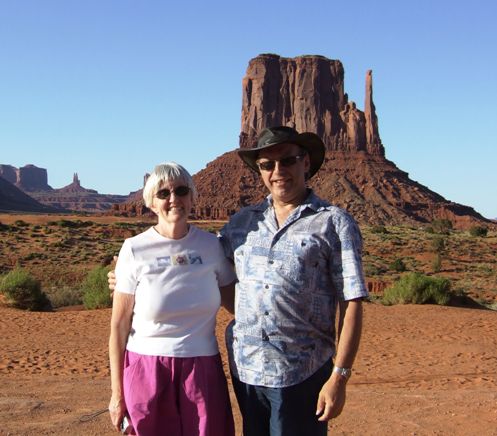 |
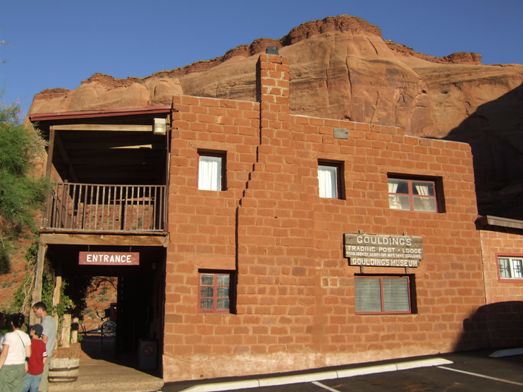 |
Back at the lodge is a small museum at the trading post started in the
early 1920s by the Gouldings. It was they who first suggested to John Ford
that this would be a good movie location. They went on to generate significant
income for the Navajo people who acted as extras. |
| Above the museum are the
Gouldings' living quarters with original furniture, and they look quite comfortable, particularly considering
they spent the first several years here living in tents. Below are photos
of Leone ('Mike') and Harry Goulding . He died in 1981 and she died in 1992. | 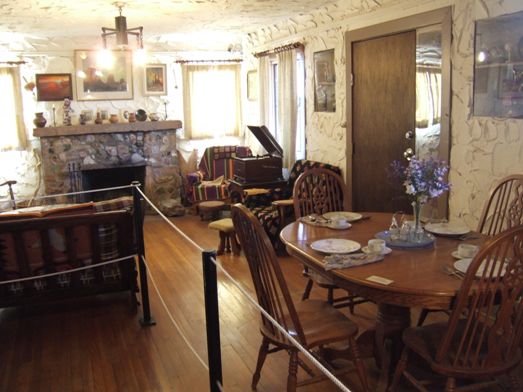 |
|